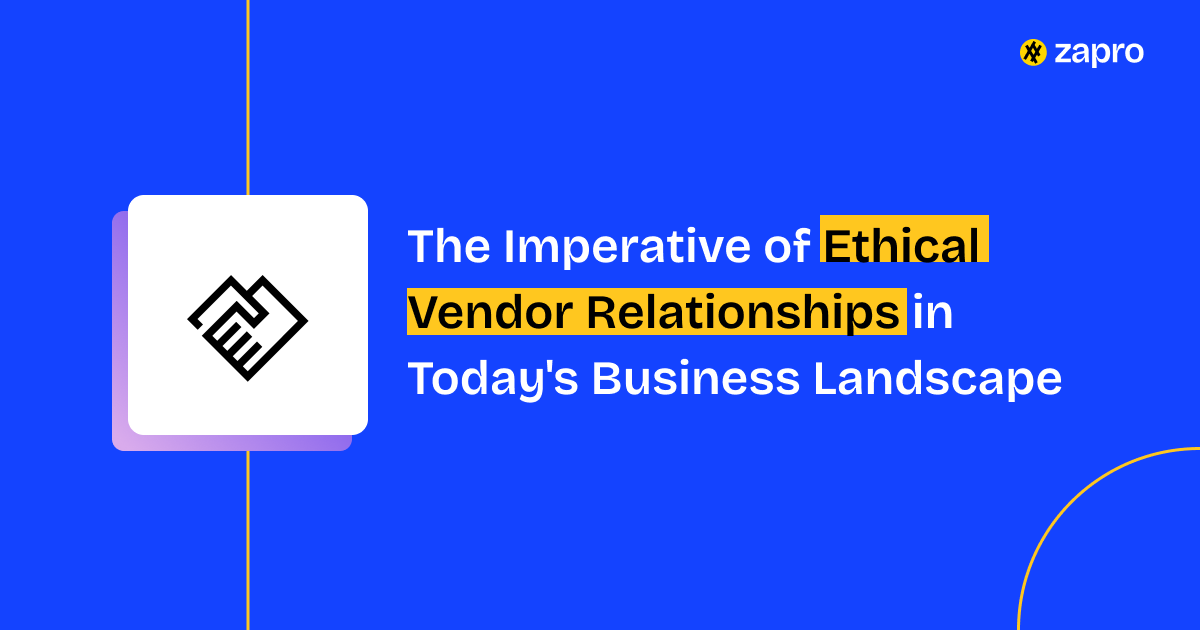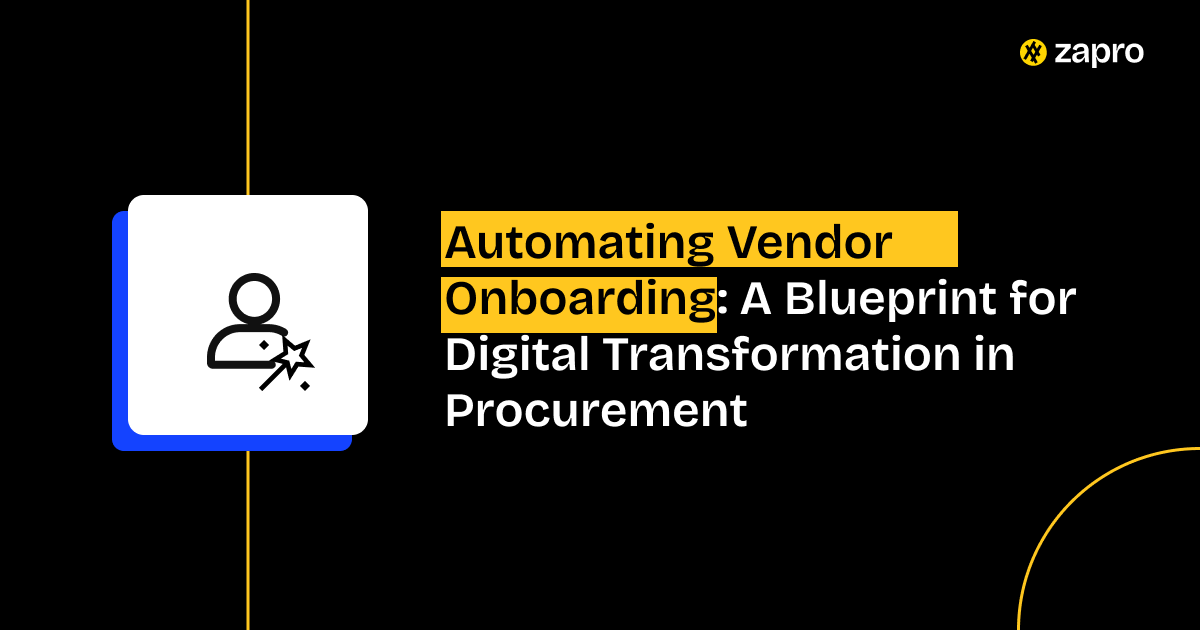You are Here: Vendor Management System Software >> Centralizing Vendor Data
What is a “single source of truth” for vendor data?
A single source of truth (SSOT) for vendor data is a centralized system or platform where all vendor-related information is consistently stored, updated, and accessed across the organization. Instead of having fragmented vendor records scattered across spreadsheets, ERP modules, emails, or individual procurement systems, SSOT consolidates everything into one unified database.
In the context of procurement and vendor management, this means every department from finance and legal to sourcing and operations refers to the same up-to-date vendor profiles, documents, certifications, and transaction history.
How it differs from data silos?
Disparate data silos are often the result of different teams using their own systems to manage vendor information. For example:
- Finance might maintain vendor bank details in their ERP.
- Procurement could have contract terms saved in a shared drive.
- Legal might store compliance certificates in yet another folder.
So what happens when vendor data is siloed?
Let’s look at the challenges organizations face when dealing with dispersed vendor information.
What are the challenges with scattered vendor data?
When vendor data is spread across disconnected systems and teams, organizations face serious operational and strategic roadblocks. Dispersed data introduces gaps, redundancies, and inefficiencies that weaken procurement performance and increase risk.
Here are the most common challenges caused by fragmented vendor information:
- Data inconsistencies and errors
Multiple systems often contain outdated or mismatched information—such as conflicting addresses, tax details, or contact names. - Duplicate vendor records
Without a unified system, it’s common for the same vendor to be entered more than once, leading to confusion and duplicate payments. - Lack of real-time visibility
Teams can’t access up-to-date vendor information when it’s needed, causing delays in approvals, onboarding, or compliance checks. - Increased manual effort and inefficiencies
Siloed data often requires manual reconciliation between spreadsheets, emails, and ERP systems, slowing down the entire procurement cycle. - Compliance risks and audit complexities
Dispersed data makes it harder to trace document history, verify credentials, or prove adherence to regulatory requirements during audits. - Delayed decision-making
When accurate vendor data isn’t readily available, it impacts everything from sourcing strategies to risk assessments.
| According to Gartner, poor data quality costs organizations an average of $15 million per year, with vendor data being a significant part of that loss. These challenges don’t just affect procurement—they ripple across finance, compliance, and operations. |
To overcome these risks, organizations need a more structured and unified approach to managing vendor data.
What are the key benefits of centralizing vendor data?
Centralizing vendor data into a single source of truth doesn’t just cut through the clutter, it unlocks real value for both procurement and finance teams.
Here’s what that looks like in practice:
- Improved data accuracy and reliability
By removing duplicate records and standardizing inputs, teams can trust that vendor information is correct, complete, and always up to date. - Enhanced compliance and risk management
Centralization simplifies audits, improves fraud detection, and ensures vendors meet all regulatory and internal compliance requirements. - Streamlined vendor onboarding
A unified system accelerates onboarding with automated checks, pre-filled fields, and standardized workflows. It cuts down errors and manual back-and-forth.
| In procurement, data is power. But only if that data is centralized, accurate, and accessible as a single source of truth. It transforms reactive buying into strategic value creation. — Bonnie Smith, Master Data Management Consultant |
- Greater operational efficiency
Less time spent searching for data means faster approvals, fewer manual tasks, and smoother cross-team collaboration. - Superior spend visibility and analytics
A centralized view of vendor data enables deeper insights into sourcing, pricing trends, and supplier performance. - Stronger supplier relationships
Consistent, transparent communication builds trust and improves the overall experience for vendors and internal stakeholders alike.
These benefits lay the foundation for a more agile, intelligent, and compliant procurement function.
What are the key features of a centralized vendor data platform?
To establish a true single source of truth, organizations need more than just a storage system; they need a platform built for intelligent vendor data management.
Here are some crucial features to look for:
- Vendor master data management (MDM)
The core engine that consolidates and governs vendor data across the organization, ensuring consistency, accuracy, and control. - Self-service vendor portal
Allows suppliers to input and update their own information, reducing manual data entry and keeping records current. - Automated data validation and cleansing
Built-in logic to detect duplicates, flag missing fields, and correct formatting issues, improving data quality at the point of entry. - Integration with ERP, AP, and other systems
Seamless connectivity with financial, procurement, and compliance systems ensures data flows smoothly across business functions. - Audit trails and version control
Tracks every change made to vendor records, enabling full visibility for compliance audits and internal reviews. - Document management
Central storage for contracts, certificates, tax documents, and other key files linked directly to each vendor profile.
| A growing trend in this space is the use of AI and machine learning to enhance data enrichment, detect anomalies, and proactively flag inconsistencies. These capabilities further improve the reliability and strategic value of centralized vendor data. |
Now let’s look at how Zapro.ai brings all these features together to help organizations build and maintain a single source of truth for vendor data.
How Zapro.ai becomes your single source of truth
Zapro.ai is built from the ground up to bring all your vendor data into one place, no more spreadsheets, shared drives, or chasing down files. It acts as your central hub, where every vendor record, document, workflow, and update lives in sync.
From onboarding to audits, teams across procurement and finance can access the same clean, up-to-date information—without second-guessing its accuracy.
The result?
Fewer silos, faster decisions, and stronger supplier relationships all powered by data you can trust.

Poor data quality costs organizations an average of $15 million per year, with fragmented vendor data being a key driver of that loss. Consolidating all vendor information into a single source of truth helps protect both efficiency and the bottom line.
Zapro.ai features for unified vendor data management
Here’s how Zapro.ai supports a fully integrated vendor data ecosystem:
- Dynamic vendor profiles
Maintain complete, centralized records for each supplier—including contact info, bank details, certifications, and performance data. - Document repository
Store and manage contracts, tax forms, compliance certificates, and onboarding files securely linked to each vendor’s profile. - Automated data capture and validation
Minimize errors and manual entry with intelligent data extraction and built-in checks that keep vendor data clean and consistent. - Seamless integrations
Connect easily with your ERP, AP automation tools, procurement systems, and compliance platforms to ensure data flows freely across functions. - Customizable fields and templates
Tailor your vendor master data structure to match your organization’s specific needs without compromising on governance.
Zapro.ai doesn’t just centralize vendor data; it makes it actionable, accurate, and audit-ready, giving you the confidence to scale procurement with precision.
Calculating the ROI of centralized vendor data with Zapro.ai
Implementing a single source of truth for vendor data isn’t just a process upgrade—it’s a cost-saving move.
With Zapro.ai, organizations typically see measurable ROI through:
- Reduced manual effort: Automated data entry, validation, and syncing significantly lower administrative overhead.
- Fewer errors and rework: Clean, validated data prevents costly mistakes such as duplicate payments or missed compliance documents.
- Improved compliance readiness: Audit trails and document traceability reduce regulatory risk and the time required for audit preparation.
- Better negotiation leverage: With full visibility into vendor performance, pricing history, and spend patterns, procurement teams can negotiate smarter contracts.
Even modest improvements in these areas can translate to hundreds of hours saved annually and in large enterprises, this adds up to millions in avoided costs and recovered value.
How to choose a solution for vendor master data management?
When evaluating vendor management software to centralize vendor data, here are key criteria to consider:
- Robust MDM capabilities: Look for platforms that support scalable vendor master data management with rules-based governance.
- System integrations: Ensure it connects easily with your ERP, AP, procurement, and compliance tools.
- Data security: The platform must offer role-based access, encryption, and compliance with data privacy standards.
- Scalability and flexibility: Choose a solution that can adapt as your vendor base, geographic reach, and compliance needs grow.
- User experience: Both internal teams and suppliers should find the platform intuitive, with minimal training required.
A reliable vendor MDM solution should do more than store data; it should orchestrate and elevate how that data powers procurement.
Why Zapro.ai is your strategic partner for unified vendor data?

Zapro.ai stands out as a comprehensive platform that simplifies vendor data management without sacrificing control or flexibility.
Here’s what makes Zapro different:
- Centralization with intelligence: Zapro.ai consolidates all vendor data in one place, enriched by AI-powered validation and anomaly detection.
- Deep integration: It fits seamlessly into your existing ecosystem, enabling smooth data exchange across ERP, finance, and sourcing systems.
- Built for scale: From mid-market firms to large enterprises, Zapro.ai grows with your procurement needs.
- Designed for teams: With intuitive dashboards and self-service tools, it empowers procurement, finance, compliance, and even suppliers to work off the same clean, trusted data.
By partnering with Zapro.ai, you’re not just solving today’s vendor data challenges, but you’re actually future-proofing your procurement operations.
Ready to turn your vendor data into a competitive advantage?
Stop chasing scattered records and start making faster, smarter decisions with a single source of truth. Zapro.ai gives you the tools to centralize, cleanse, and activate your vendor data so every stakeholder works from the same reliable foundation.
Book a personalized demo today and see how unified vendor data can transform your procurement function.
Frequently Asked Questions
1. What is vendor master data management (MDM)?
Vendor MDM is the process of creating, maintaining, and governing a consistent set of vendor data across an organization. It ensures that supplier information—such as contact details, tax IDs, and banking info—is accurate, complete, and accessible in one centralized location.
2. How does centralized vendor data improve compliance?
Centralized data makes it easier to track certifications, monitor regulatory requirements, and maintain a clear audit trail. It reduces the risk of using unverified or non-compliant vendors and simplifies internal and external audits.
3. What are the first steps to centralizing vendor data?
Start by auditing your existing vendor records, identifying duplicates, and mapping out where data currently lives (ERP, spreadsheets, etc.). From there, choose a platform like Zapro.ai that supports master data consolidation, cleansing, and ongoing governance.
4. How does a vendor portal contribute to a single source of truth?
A self-service vendor portal allows suppliers to submit and update their own information, which is then validated and stored in your central system. This keeps records accurate, reduces manual entry, and ensures that vendor data remains current.
5. What are the security considerations for centralized vendor data?
Ensure the platform uses role-based access controls, encryption, and regular backups. Data governance policies and compliance with regulations like GDPR or SOC 2 are also critical to protect sensitive supplier information.
6. How often should vendor data be updated and validated?
Vendor data should be reviewed at regular intervals, typically quarterly or semi-annually and validated during onboarding, before payments, or when major changes (like banking details) occur. Automated reminders and validation tools can streamline this process.
Improve your supplier relationship in just a click!

Don’t miss our weekly updates
We’ll email you 1-3 times per week—and never share your information.

 Healthcare
Healthcare Financial Services
Financial Services Technology
Technology Venture Capitalist
Venture Capitalist Chief Procurement Officer
Chief Procurement Officer Chief Financial Officer
Chief Financial Officer




